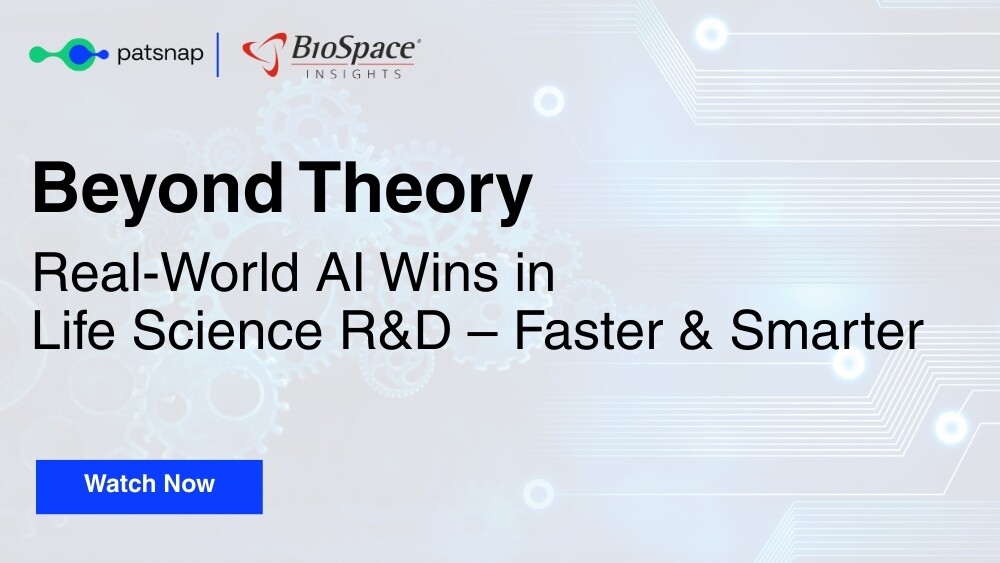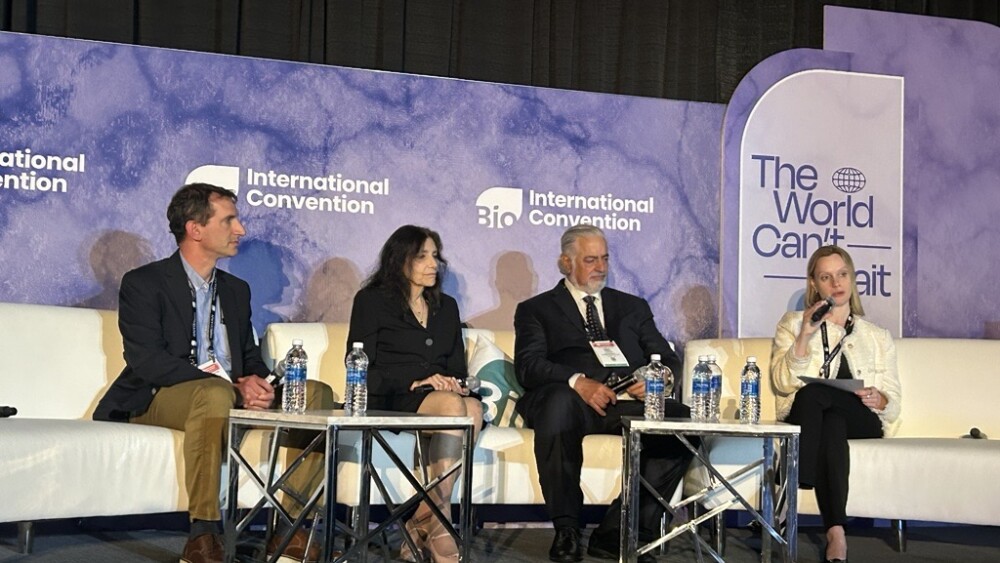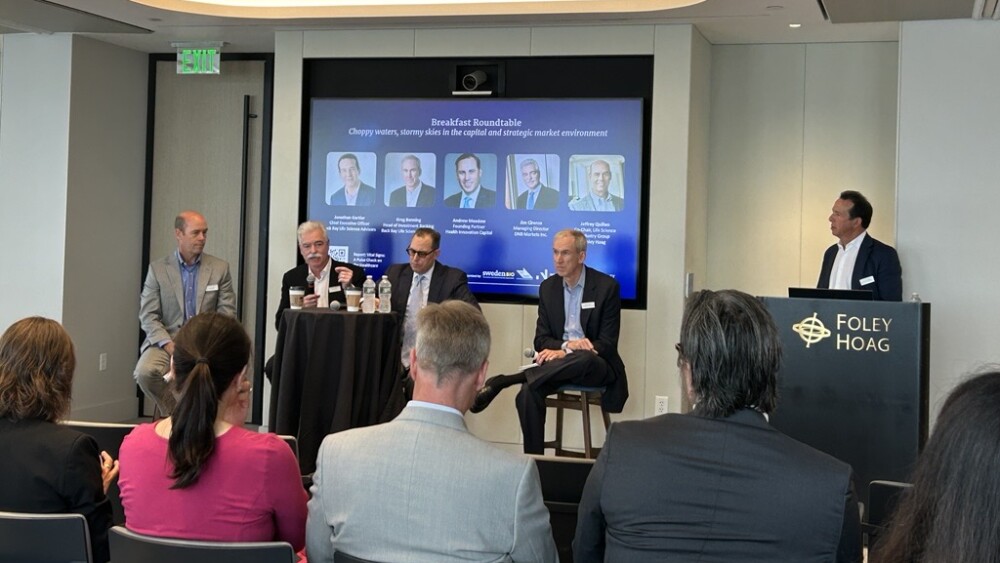Amit Sohagia, MD received ACG’s Outstanding Poster Presenter Award for TIF 2.0 procedure poster
October 29, 2018 10:00 AM Eastern Daylight Time
REDMOND, Wash.--(BUSINESS WIRE)--EndoGastric Solutions today announced the presentation of three posters at the American College of Gastroenterology (ACG) 2018 Annual Scientific Meeting and Postgraduate Course, highlighting the safety and efficacy of Transoral Incisionless Fundoplication (TIF) 2.0 procedure for the treatment of gastroesophageal reflux disease (GERD). TIF 2.0 procedure is a minimally invasive and endoscopic intervention that enables anatomical correction of the gastric valve without incisions or attendant complications associated with laparoscopic surgical fundoplication. The ACG 2018 annual meeting was held October 5 – 10 in Philadelphia, PA.
Amit Sohagia, MD, a gastroenterologist at Easton Hospital, received the ACG’s Outstanding Poster Presenter Award for an abstract titled “Transoral Incisionless Fundoplication: Effectiveness in Improving Typical and Atypical Symptoms of Gastroesophageal Reflux Disease Incompletely Controlled with Medical Therapy.”
“With the prevalence of GERD increasing worldwide, a growing number of patients are living with reflux symptoms that reduce their quality of life and increase their risk of cancer,” said Dr. Sohagia. “Patients refractory to medical therapy may benefit from surgical intervention, but traditional invasive procedures are associated with a variety of adverse events. The results of our study add to the robust foundation of data demonstrating that the TIF procedure improves quality of life in patients by effectively addressing both typical and atypical GERD symptoms.”
“The results of our study add to the robust foundation of data demonstrating that the TIF procedure improves quality of life in patients by effectively addressing both typical and atypical GERD symptoms.” Amit Sohagia, MD, Easton Hospital
Dr. Sohagia presented the results of a prospective study conducted in 41 patients with long-standing history of GERD refractory to acid suppressant medications (proton pump inhibitors [PPIs] or histamine antagonists [H2 blockers]) who underwent the TIF procedure. The primary outcome was patient satisfaction as determined by pre- and post-TIF procedure GERD Health Related Quality of Life Questionnaires (GERD-HRQL) and Reflux Symptom Index (RSI) scores, along with the reduction in the use of PPIs or H2 blockers. At median follow up of nine months, significant improvements were reported for GERD-HRQL and RSI and for symptoms of heartburn, dysphagia and regurgitation (p= 0.0001 for all assessments except for dysphagia, which had a p value of 0.006). At short-term follow up, TIF procedure eliminated the need for PPI therapy in the majority of patients. Patients who initiated PPI or H2 blocker therapy after the TIF procedure also had significant improvements in pre- and post-TIF procedure scores on GERD-HRQL and RSI (p = 0.002 and 0.047, respectively).
The two other posters presented at ACG 2018 were:
- “Efficacy and Safety of Trans-Oral Incisionless Fundoplication Performed by Gastroenterologists,” which demonstrated that gastroenterologists trained in TIF procedure can safely perform the procedure in the endoscopy suite. This may save time and healthcare resources by reducing operating room (OR) use. The study also found that TIF procedure performed by gastroenterologists effectively improved HRQL in patients with symptomatic GERD. Presented by Ali Raza, MD1, Marc Catalano, MD1, Erik F. Rahimi, MD1, Hani A Zamil, MD2, Bijun S. Kannadath, MBBS, MS3, Julie Guider, MD1, Reena V. Chokshi, MD4, Brooks D. Cash, MD, FACG1, Todd Wilson, MD1, Erik Wilson, MD1, Nirav Thosani, MD2;1University of Texas Health Science Center at Houston, Houston, TX; 2University of Texas Health Science Center at Houston / McGovern Medical School, Houston, TX; 3University of Arizona College of Medicine, Phoenix, AZ; 4UT Health - McGovern Medical School, Houston, TX.
- “Transoral Incisionless Fundoplication in a Patient with Dysphagia from Peptic Stricture,” which showed that TIF procedure can be used to reduce esophageal acid exposure and prevent stricture recurrence in a patient with dysphagia due to recurrent peptic stricture. Presented by Zain Iqbal Memon, DO, David Dicaprio, DO, Patrick Okolo, MD; Northwell Health Lenox Hill Hospital, New York, NY.
“The data presented at ACG 2018 continues to demonstrate that TIF 2.0 procedure is a safe and effective approach to treating GERD in a variety of patient populations and can be performed in the operating room or the endoscopy suite,” said Skip Baldino, President and CEO of EndoGastric Solutions. “These results highlight the clinical benefits that the TIF 2.0 procedure provides to patients and the workflow flexibility that it affords physicians and care centers. We congratulate Dr. Sohagia on receiving the Outstanding Poster Presenter Award, and for his continued efforts to help the GERD patients he serves.”
About GERD
Gastroesophageal reflux disease (GERD) is a chronic condition in which the gastroesophageal valve (GEV) allows gastric contents to reflux (wash backwards) into the esophagus, causing heartburn and possible injury to the esophageal lining. In the United States (U.S.), GERD is the most common gastrointestinal-related diagnosis physicians make during clinical visits. Pain and discomfort from acid reflux impact more than 80 million Americans at least once a month according to estimates. The first treatment recommendation for patients with GERD is to make lifestyle changes (e.g., diet, scheduled eating times and sleeping positions). Patients are also instructed to take medications—proton pump inhibitors; unfortunately, patients frequently increase their dosage and, over time, become dependent on these medications to control their symptoms. In addition, a variety of other health complications are linked to long-term, maximum-dose dependency on these PPIs
About Transoral Incisionless Fundoplication (TIF®) procedure for reflux
A minimally invasive endoscopic treatment, performed without the need for external incisions through the skin, the TIF 2.0 procedure offers patients who require an anatomical repair an effective treatment option to correct the underlying cause of GERD. Most patients stop using daily medications to control their symptoms and had their esophageal inflammation (esophagitis) eliminated up to five years after the TIF procedure, based on clinical studies.
There have been over 20,000 patients who have benefited from the TIF procedure worldwide since the EsophyX® device launched. In the past ten years, more than 60 centers have published over 80 peer-reviewed papers. These studies have consistently documented improved outcomes on more than 1,300 unique study patients. For more information, please visit www.GERDHelp.com.
About Reimbursement
Commercial and federal payer partnerships representing over 100 million lives have recognized the value of the TIF procedure through recent contract and coverage reimbursement expansions. EndoGastric Solutions has confirmed coverage for all Medicare enrollees through Medicare Administrative Contractors (MACs)—CGS, First Coast, NGS, Noridian, Novitas, Palmetto, WPS.
Annually, the Federal Register posts unadjusted average payments specific to the CPT® code for physicians and hospital Ambulatory Payment Codes (APC), allowing patients to receive access to treatment more easily for GERD. For the TIF procedure, physicians can reference CPT Code 43210 EGD esophagogastric fundoplasty and hospitals can reference APC 5362 Level 2 Laparoscopy Procedures. CPT is registered trademark of the American Medical Association.
About EsophyX® technology
The EsophyX technology is used to reconstruct the gastroesophageal valve (GEV) and restore its function as a barrier, preventing stomach acids refluxing back into the esophagus. The device is inserted through the patient’s mouth with direct visual guidance from an endoscope. The U.S. Food and Drug Administration cleared the original EsophyX device in 2007. EndoGastric Solutions® launched the third generation EsophyX device, the EsophyX Z model, in 2015. The evolving EsophyX technology now enables surgeons and gastroenterologists to use a wider selection of endoscopes to treat the underlying anatomical cause of GERD. These options include low profile and larger high-definition models.
Indications
The EsophyX device with SerosaFuse® fasteners and accessories are indicated for use in transoral tissue approximation, full thickness plication and ligation in the gastrointestinal tract. They are indicated for the treatment of symptomatic chronic GERD in patients who require and respond to pharmacological therapy. The device is also indicated to narrow the gastroesophageal junction and reduce hiatal hernia ≤ 2cm in size in patients with symptomatic chronic GERD. Patients with hiatal hernias larger than 2cm may be included, when a laparoscopic hiatal hernia repair reduces the hernia to 2cm or less.
About EndoGastric Solutions®
Based in Redmond, WA, EndoGastric Solutions, Inc. (www.endogastricsolutions.com), is a medical device company developing and commercializing innovative, evidence-based, incisionless surgical technology for the treatment of GERD. EGS has combined the most advanced concepts in gastroenterology and surgery to develop the Transoral Incisionless Fundoplication (TIF®) 2.0 procedure—a minimally invasive solution that addresses a significant unmet clinical need. Join the conversation on Twitter: @GERDHelp Facebook: GERDHelp and Google+: GERDHelp, LinkedIn: EndoGastric Solutions.




